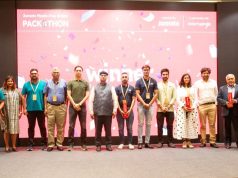Smart Cities Don’t Work If They Don’t Work For Everyone

India will add over 400 million urban inhabitants by 2050, more than any other country. Managing such growth will require unprecedented levels of planning and investment in housing, infrastructure and public services. This is where “smart” can be a game-changer.

Technology has fundamentally changed the way cities operate and grow. Innovations in data collection, integration and analytics are improving the way citizens, businesses and governments operate on a daily basis. Globally, Cisco estimates that smart cities’ development opportunity is a potential US $3 trillion market. India’s 100 Smart Cities plan will be funded by a public investment of USD $1.2 billion in the first year alone, and additional private investment is expected to dwarf this number. CISCO’s Deputy Chief Globalisation Officer and President Smart+Connected Communities, Dr. Anil Menon, makes a pertinent point when he asks us, “What if you had unlimited computing, storage, and bandwidth at a reasonable price – would you do healthcare the same way again? Would you do education the same way again? Would you build a city the same way again?”
But what really defines a smart city? It is not just data and technology. We believe this rests on four key levers.
1. Fundamentally, a smart city is one that unifies data from a wide range of sources–embedded sensors, public services, citizen reports, telecom companies and more–to inform decision-making by policy makers, businesses and citizens.
2. Smart cities adapt in real time as the city’s fabric shifts and changes, be it due to everyday events such as power outages or road closures, long-term changes like the development of new neighbourhoods or flyovers or one-off events like a natural disaster.
3. Smart cities’ systems are essentially built around the needs of citizens, providing the essential infrastructure and services they need to thrive and prosper. They are designed to intuit and respond to the wide array of demands that a diverse and densely concentrated user base expresses.
4. A smart city forms a platform for innovation, providing the tools and environment for all citizens to develop their full potential.
Public and private players are already leveraging new technologies to advance this concept of a citizen-centric smart city. Microsoft’s Citizen Next App, developed in collaboration with the Greater Hyderabad Municipal Corporation, allows citizens to photograph, geo-locate and report issues like uncollected waste and potholes to local authorities in three simple steps. Citizens can even track their complaints through the app and ensure they are resolved. In Agra participatory planning is being used to improve the way affordable housing is designed and developed. The Centre for Urban and Regional Excellence (CURE) is preparing slum upgrading plans through community consultations, household surveys, and mapping of land use and housing footprints. CURE applies an approach where housing and infrastructure improvements occur when and how people need them and not the other way around.MIT’s Senseable City Lab experiments with technological feedback loops to understand and shape citizen behaviour. Saaf India was inspired by the Lab’s work mapping the route of Seattle’s garbage to understand patterns and costs as it moved through the city’s sanitation system, and hopes to test a similar approach in India to increase awareness and change citizen behavior around waste.
In the end, people hold the key to success. A city is “smart” when those who live in it are at the heart of its design.
This article is written by Kira Intrator and Sanchali Pal of Dalberg Global Development Advisors and originally appeared in Huffington Post India.
 Dalberg Global Development Advisors is a strategic consulting firm that works exclusively to raise living standards in developing countries and address global issues like climate change and public health.
Dalberg Global Development Advisors is a strategic consulting firm that works exclusively to raise living standards in developing countries and address global issues like climate change and public health.












